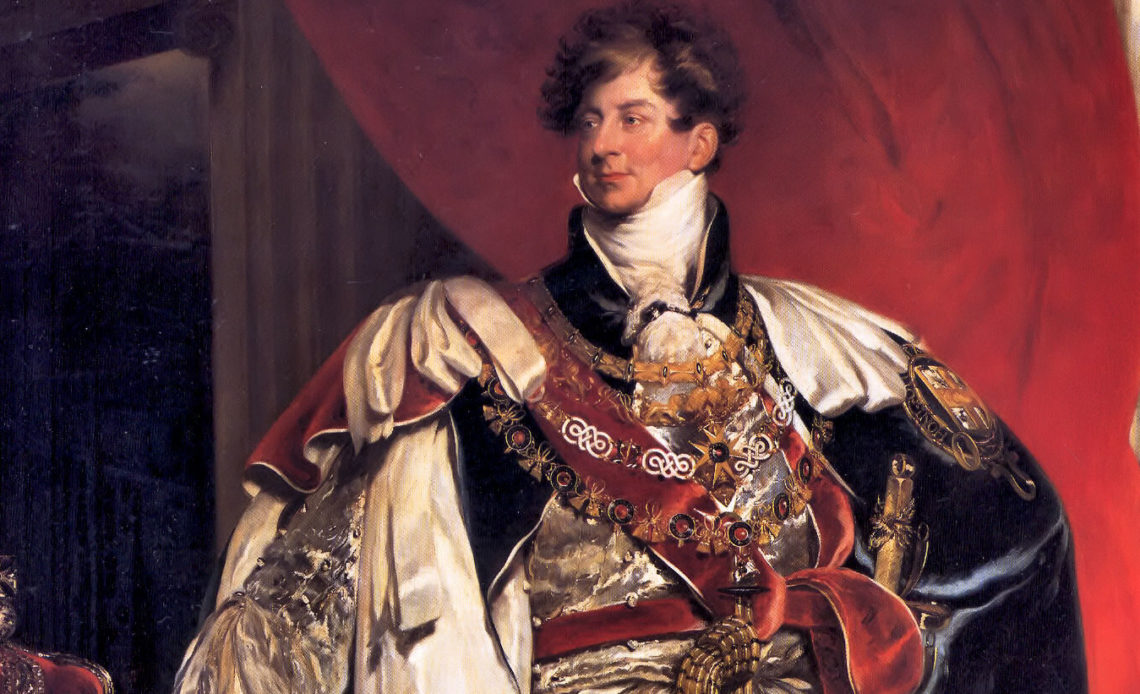
On 29 January 1820, George IV ascended the throne to become the
King of Great Britain. The oldest child of King George III and
Queen Charlotte, George IV is remembered for his role as Regent and
style setter rather than his reign as King.
George IV’s lasting legacy was the Regency period, as the Regent in question. The Regency is known for a flourishing of arts and literature, the resurgence of Classical architecture, and great social and political change.
As the Prince of Wales, George was one of the greatest patrons
and supporters of architecture and the arts. He commissioned the
Brighton Pavilion and Carlton House. He was a fan of author Jane
Austen, and her novel Emma was actually (grudingly)
dedicated to the Prince Regent. In the Regency period, Bath
was one of the Prince’s favourite cities. Taste-maker and society
host Beau Brummell and architect John Nash, largely responsible for
the growth of Bath, were both George’s close associates.
George IV was the exact opposite of his quiet and dedicated
father. He was addicted to gambling, drank to excess, and kept
several mistresses. He continued to spend wildly, and his debts
spiraled. Parliament gave him a one time grant of £60,000 when he
reached 21, and agree to an annual income of£50,000. This came
nowhere near to covering his debts.
Shortly after turning 21, George fell in love with Maria
Fitzherbert. Fitzherbert was a 27 year old, Catholic widow, and
could never be recognised as the Princess of Wales. Nevertheless,
George married her in 1785, though the marriage was void without
the consent of George III. In order to receive needed money from
Parliament and his father, he married a royal relative, Caroline of
Brunswick, in 1795. It was a famously unhappy marriage and they
separated permanently after the birth of their daughter Princess
Charlotte of Wales in 1796.
When George III became seriously ill with mental health problems
in 1788, the government struggled with who should open Parliament
and fulfil the King’s duties while he was unable. Whig leader James
Charles Fox felt that as Prince of Wales, George was the best
person to hold that role. When George III’s mental health
deteriorated again in 1810, his doctors and advisers felt he would
never recover. The Prince of Wales served as Prince Regent from
1810 until he ascended the throne in 1820.
George IV held a lavish coronation on 19 July 1821, costing
roughly £243,000 (which would be nearly £22,000,000 in today’s
money). He famously excluded his estranged wife from Westminster
Abbey, opening him to ridicule. By the time of his ascension,
George was obese and probably addicted to laudenum. He spent much
of his reign at Windsor Castle, though still had significant
influence in the political sphere. He would eventually be
succeeded by his younger brother, King William IV.

